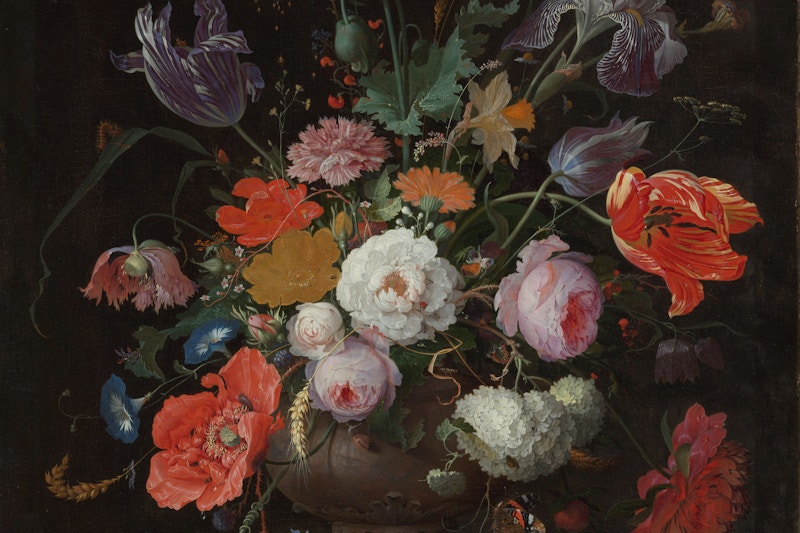
Toto Bergamo Rossi on Safeguarding Venice’s Heritage
The Venetian Heritage director shares the history and mission behind the organization and their latest restoration project at the iconic Ca’ d’Oro on Venice’s Grand Canal
- By Cheyenne Wehren
- Meet the Experts
For 25 years, Venetian Heritage has been
committed to the long-term preservation of
Venice’s artistic and cultural heritage—and
director Toto Bergamo Rossi has served a key
role from the start. Trained and specialized
in the conservation of stones and sculpture,
Venice-native Bergamo Rossi joined the
initiative that would grow into Venetian
Heritage as a restorer. Already then, while
managing his own restoration studio, he was
inspired to take a different approach toward
restoration. “In my opinion, it feels reductive
to just restore an artwork and put it back on
display as it was. You need to do something
different, something bigger, and share the
artwork’s story and context,” Bergamo Rossi
says. Driven by an unmistakable passion for
Venice, art, and disseminating knowledge
with the public, Bergamo Rossi continuously
advocates for an all-encompassing approach
toward the projects pursued by Venetian
Heritage, where he took on his current
managerial role in 2010.

The Galleria Giorgio Franchetti alla Ca’ d’Oro in Venice. Photo: Marco Valmarana. Courtesy of the Italian Ministry of Culture – Direzione regionale Musei Veneto.
Venetian Heritage’s mission is to safeguard, support, and celebrate the legacy of Venetian art in its broadest sense. The organization focuses on the geographical areas once part of the ancient Venetian Republic—crossing the northeast of Italy into regions of Croatia, Greece, and Turkey. It furthermore realizes projects across restoration, publications, and exhibitions, and supports the education and training of specialized conservators. While Venice was home to some of the most preeminent masters in the history of art, Venetian Heritage’s activities do not only focus on fine art but also on the region’s remarkable architectural monuments. “Venice’s history during the Middle Ages differs substantially from many other cities in Italy. While Rome was abandoned and the Pope relocated to Avignon, and these smaller states were constantly at war with each other, Venice took to the sea, becoming an important financial power through its contact and trade with the center of the world at that time, Constantinople/Byzantium,” Bergamo Rossi explains. “This has been absorbed by Venice’s character, it is why we have open loggias, mosaics, colored marble. This makes, I believe, Venice’s heritage so different and so special.” Some of the projects Venetian Heritage is currently involved with or has completed in Venice are restorations of artworks by masters such as Giovanni Bellini, Luca Giordano, and Giovanni Battista Tiepolo from the collection of the Gallerie dell’Accademia and the restoration, maintenance, and new exhibition display at the Palazzo Grimani. Beyond Venice, the organization has supported extensive restorations at the Basilica of Saint Anthony in Padua and at the Cathedral of Saint Lawrence in Trogir, Croatia, among others.
One of the organization’s current large-scale projects is the restoration of the Ca’ d’Oro, an iconic late Gothic palazzo on Venice’s Grand Canal which houses the collection of Baron Giorgio Franchetti (1856–1922), who restored the broken- down building when he acquired it. Franchetti set out to create a museum dedicated to his eclectic collection, which includes paintings, sculptures, medals, bronzes, furniture, and tapestries from the 14th to the 18th century—one of its masterpieces being Andrea Mantegna’s Saint Sebastian (c. 1500), on display in a purpose-built marble room, designed to highlight the artwork’s sacred nature. Battling illness, Franchetti donated his collection and the Ca’ d’Oro to the Italian state in 1916; this was followed by the opening of the museum in 1927, displaying Franchetti’s collection complemented by Renaissance artworks from other national museums or demolished religious buildings.

Andrea Mantegna’s Saint Sebastian at the Galleria Giorgio Franchetti alla Ca’ d’Oro in Venice. Photo: Matteo De Fina. Courtesy of the Italian Ministry of Culture – Direzione regionale Musei Veneto.
The Ca’ d’Oro is undergoing architectural and structural renovations, from maintenance on its internal plasterwork, wooden ceilings, and the marble of its loggias, to improvements on its air conditioning and lighting systems, as well as a comprehensive rethinking of its display and the museum’s organizing principles. The process has been planned in stages, in order to keep certain areas of the museum open to visitors throughout the restoration. “The building was once renovated in the 1970s following the Brutalist architectural principles popular at the time, and the museum itself also still adhered to an outdated approach to its display, without any contextualization of the artworks or the collection. We want to do the opposite, we want to both take care of the building and make it educational and enjoyable for visitors,” shares Bergamo Rossi, whose goal it is for this “sleeping beauty” to be fully accessible to the public from 2025 onwards. Funded by Venetian Heritage and the Fondazione Giulio e Giovanna Sacchetti, Bergamo Rossi and his team are actively involved in the process, overseeing the restoration in collaboration with the Italian Ministry of Culture. “We run the project together with the museum, we work on the preliminary preparations, we select the best restorers together—this collaboration and Venetian Heritage’s status as a private foundation makes it possible to take immediate decisions and progress faster, too,” he explains.
Thinking about Venetian Heritage’s future, Bergamo Rossi envisions many projects that he still wants to accomplish with undeniable excitement, while continuing his dedication to preservation and education—fundamental objectives of Venetian Heritage’s mission. “We want to care for Venice’s heritage and continue to share this history and knowledge with the public, as I believe that it is through this act of sharing that we can enrich people’s lives.”


